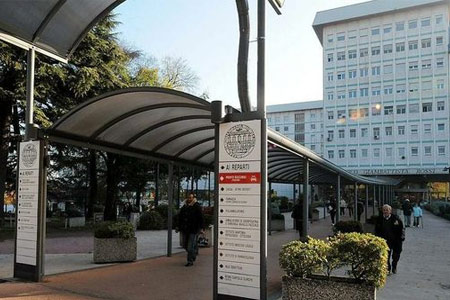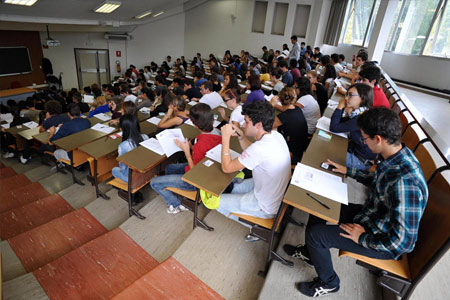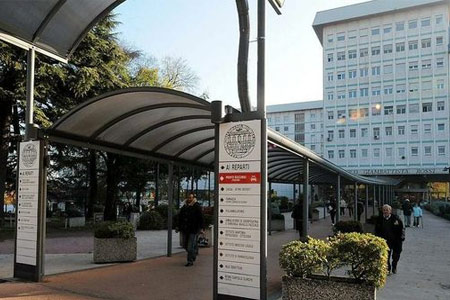- Autori:
-
Onorati, Francesco; Curcio, Antonio; Santarpino, Giuseppe; Torella, Daniele; Mastroroberto, Pasquale; Tucci, Luigi; Indolfi, Ciro; Renzulli, Attilio
- Titolo:
-
Routine ganglionic plexi ablation during Maze procedure improves hospital and early follow-up results of mitral surgery
- Anno:
-
2008
- Tipologia prodotto:
-
Articolo in Rivista
- Tipologia ANVUR:
- Articolo su rivista
- Lingua:
-
Inglese
- Referee:
-
No
- Nome rivista:
- Thoracic and Cardiovascular Surgeon
- ISSN Rivista:
- 0022-5223
- N° Volume:
-
136
- Numero o Fascicolo:
-
2
- Intervallo pagine:
-
408-418
- Parole chiave:
-
Aged; Atrial Fibrillation; Echocardiography; Female; Ganglia; Heart; Heart Failure; Heart Rate; Hemodynamics; Humans; Male; Middle Aged; Mitral Valve; Postoperative Care; Recurrence; Catheter Ablation
- Breve descrizione dei contenuti:
- Objective: Ganglionic plexi are claimed to be potentially responsible for atrial fibrillation. We evaluated whether ganglionic plexi isolation improves the results of the Maze procedure during mitral valve surgery.Methods: A total of 75 patients with atrial fibrillation underwent radio-frequency ablation during mitral valve surgery without (group A) or with (group B) ganglionic plexi ablation with bipolar radiofrequency plus fat pad resection along the Waterston groove, left pulmonary veins, and Marshall's ligament. Ganglionic plexi were intra-operatively mapped, and fat pad specimens were sectioned and analyzed. Hospital and follow-up results were recorded. Amiodarone was discontinued at the sixth month.Results: Active ganglionic plexi were mainly located in the upper parts of fat pads. Active specimens demonstrated more ganglionic plexi than inactive specimens (P :5.015 at different levels) but did not correlate with atrial fibrillation recurrence (P = not significant). Atrial fibrillation was higher in group A at aortic declamping (P = .03) and discharge (P = .03). Early events were comparable (P = .565). At 16.7 +/- 0.95 (standard error) months, the cumulative freedom from atrial fibrillation, atrial flutter, and atrial tachycardia with antiarrhythmic therapy was 63.2% +/- 7.3% and proved higher in group B (83.9% +/- 7.9% vs group A 52.8% +/- 8.7%; P =.035). However, after the sixth month, at 12.8 +/- 0.80 months, freedom from atrial fibrillation, atrial flutter, and atrial tachycardia without antiarrhythmic therapy was 72.5% +/- 7.7% and proved higher in group B (92.9% +/- 6.9% vs 62.5% +/- 9.4%; P = .023). A higher proportion of patients in group B showed normalized E/A ratio (61.3% vs group A 36.4%; P =.029). No differences were detected in follow-up freedom from congestive heart failure (group A: 83.4% +/- 7.0% vs group B: 93.5% 4.4%; P = .978) and hospital readmission (group A: 84.2% +/- 5.9% vs group B: 92.6% +/- 5.1%; P = .376).Conclusion: Ganglionic plexi isolation can improve hospital and follow-up results during mitral valve Surgery and possibly ameliorate echocardiographic recovery of atrial function during follow-up.
- Id prodotto:
-
116347
- Handle IRIS:
-
11562/1025534
- ultima modifica:
-
18 novembre 2022
- Citazione bibliografica:
-
Onorati, Francesco; Curcio, Antonio; Santarpino, Giuseppe; Torella, Daniele; Mastroroberto, Pasquale; Tucci, Luigi; Indolfi, Ciro; Renzulli, Attilio,
Routine ganglionic plexi ablation during Maze procedure improves hospital and early follow-up results of mitral surgery
«Thoracic and Cardiovascular Surgeon»
, vol.
136
, n.
2
,
2008
,
pp. 408-418
Consulta la scheda completa presente nel
repository istituzionale della Ricerca di Ateneo 








